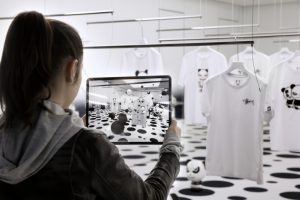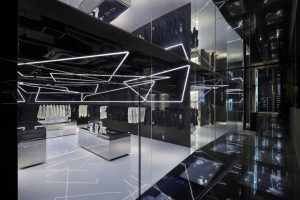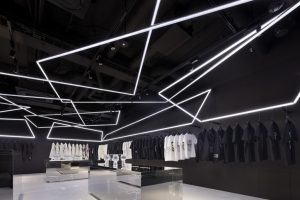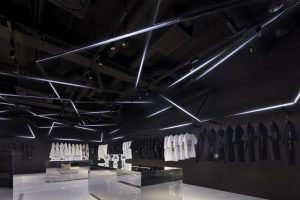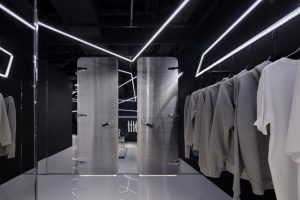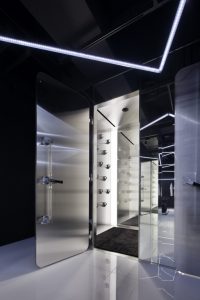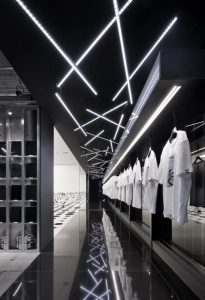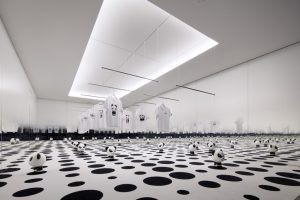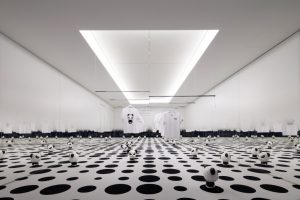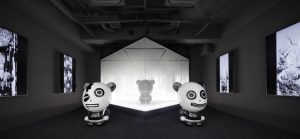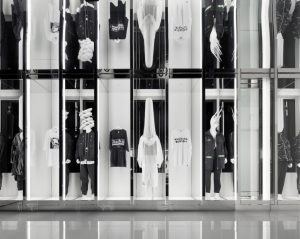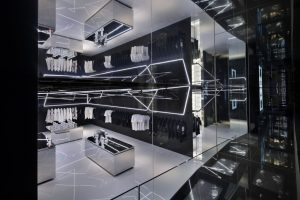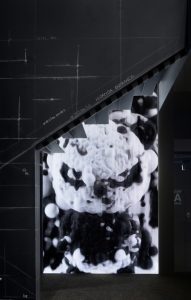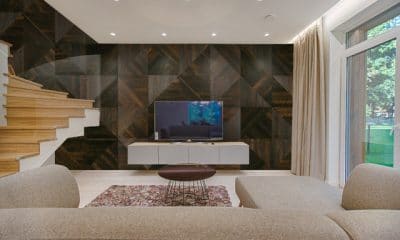Debuting its first physical location on Tokyo’s tree-lined Omotesando- thoroughfare, Chinese-based HiPanda is a unique streetwear brand making waves with its unusual in-store experience. Designed by firm Curiosity (Tokyo), the store’s interior is a world where technology, architecture, art and fashion collide.
Originally, the firm was poised to create a striking interior that would measure up to the other creative fashion brands lining the avenue, says Nicolas Gwenael, President, Curiosity. “However, I realized there was much more potential for the brand and its positioning than just doing an interior. It was an opportunity to create a multi-platform project, where the store itself would become a creators’ hub of data and content, for the different media … accessible to customers.”
The augmented reality experience the designers created revolves around the notion of a “ghost house.” Essentially, not all of the in-store characters are visible until AR is used via a compatible device, bringing to life a real-time game of hide-and-seek. “The idea was to create a parallel world between the real and the virtual, with the two interacting constantly,” says Gwenael.
The journey starts at the storefront, where the logo seemingly pops out from the façade and appears to float. (The scene can be changed each season.) Shoppers are welcomed by an expansive digital screen inside the entrance, “…the character is like a morphing sculpture; always changing, melting, twisting. And sometimes visible,” says Gwenael.
From here, a slope leads into the first retail area; a floor screen leads the way, displaying a paved path. Pointing a device around the corridor, the shopper sees a panda that appears to be walking toward them. The ground floor features a layer of transparent black hanging bars with LED-lit, moving illumination, which creates the appearance of movement as products seem to float in space.
Continuing upstairs on the AR journey, a long T-shirt display seems to turn toward the user as they walk by, revealing a graphic. Further on, a large, white room that appears almost digital itself creates an infinity mirror affect.
Advertisement
“Welcome to the AR room,” says Gwenael about the space. “This becomes a stage for an art installation in motion; the floor rises and becomes a forest of dark tubes that hides all the products, fuses into a huge sphere in the center, and in the meantime, pandas jump from the floor and run throughout across the mirror.”
One of the last rooms is a direct reference to the store’s spooky aesthetic and features a large glass box with a black panda inside that disappears and reappears inside the box using smoke – simple but mesmerizing.
And if you don’t have a compatible device, you’re still in luck. Designers made sure plenty of the elements are visible to the naked eye. “The augmented reality is perceived by anybody using devices or not,” Gwenael says. “As you walk through the space, the perception, movement and connection between the viewer and the products, and the space, are constant.”
PROJECT SUPPLIERS
Retailer
Takeuma Ltd., Tokyo
Design
Curiosity Inc., Tokyo
Advertisement
Audio/Visual
Hakuten Corp., Tokyo
Wow Inc., Tokyo
Mannequins/Forms
Nanasai Co., Ltd., Tokyo
Lighting
Yamagiwa Corp., Sotokanda, Japan
Props/Decoratives
Iwamoto Model Seisakusyo Co. Ltd., Tokyo
Architecture
Garde, Tokyo
General Contractor
Nomura Co. Ltd., Tokyo
Advertisement
Photography: Satoshi Shigeta, Tokyo
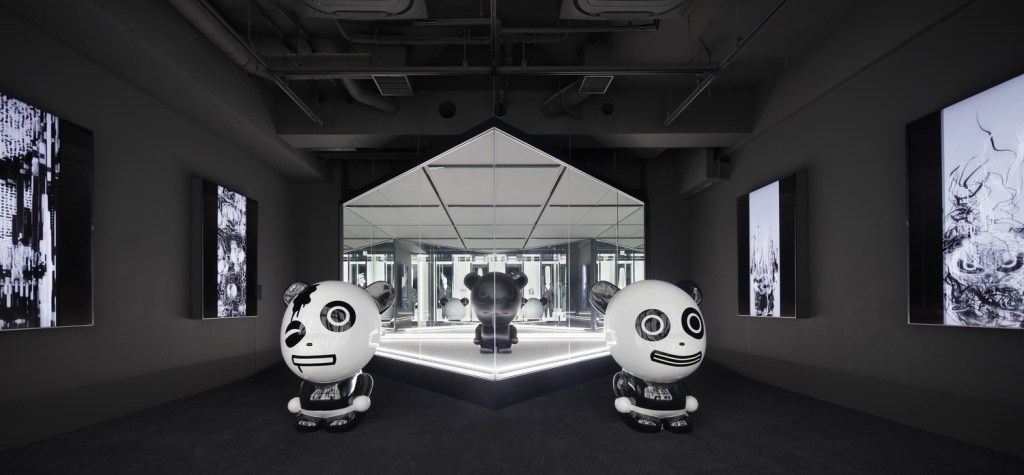

 Photo Gallery1 week ago
Photo Gallery1 week ago
 Headlines3 days ago
Headlines3 days ago
 Headlines1 week ago
Headlines1 week ago
 Headlines1 week ago
Headlines1 week ago
 Headlines1 week ago
Headlines1 week ago
 Designer Dozen7 days ago
Designer Dozen7 days ago
 Headlines1 week ago
Headlines1 week ago
 Headlines1 week ago
Headlines1 week ago

